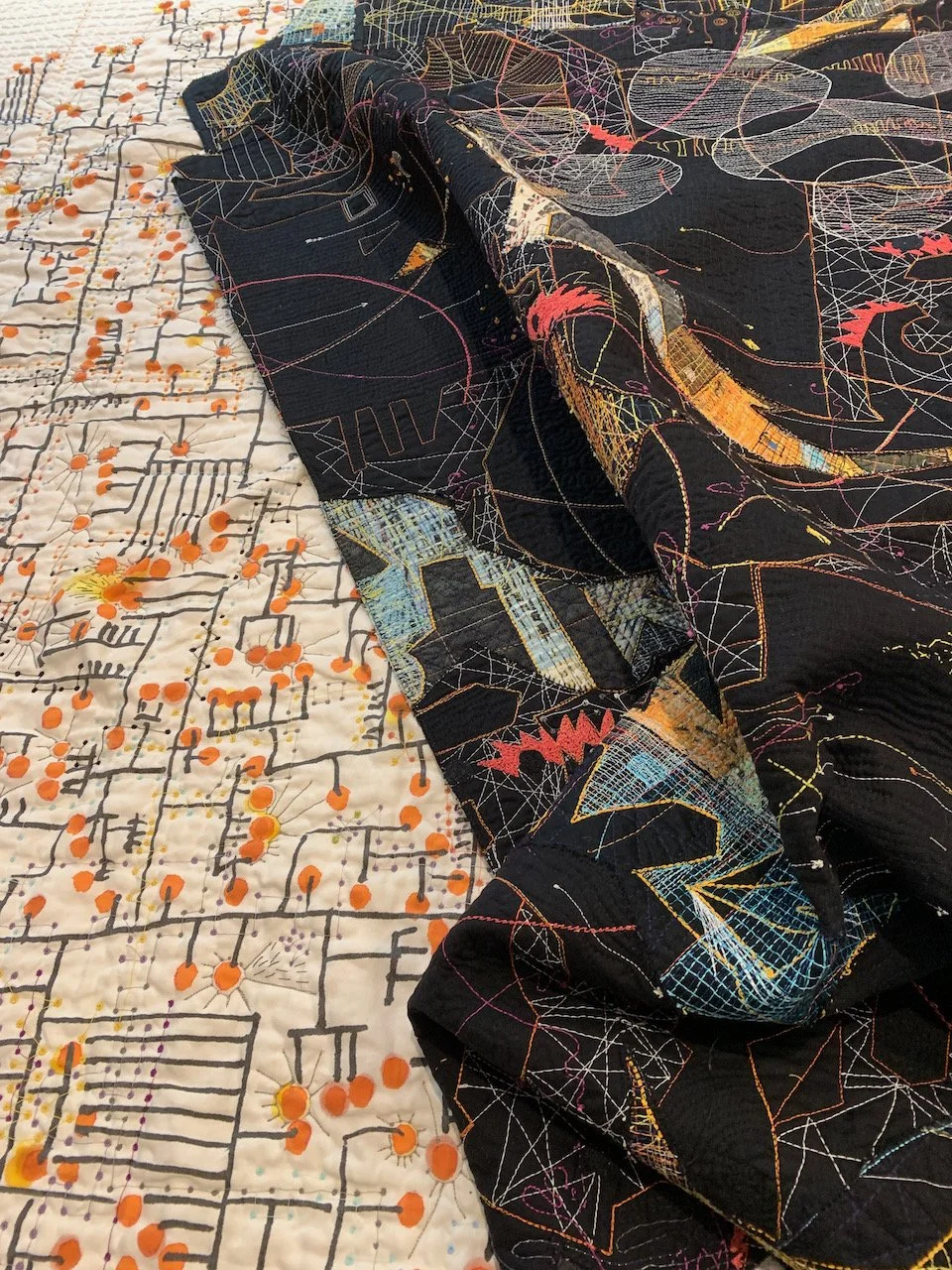I spent the week making little marks. obsessively. They were small imprints that wanted out of my head. It felt like an unknown language, one that had deeper beginnings.
Listening to interviews of world leaders, analysts, pundits and disruptors it came to me that we are all speaking in code. No one seems ready to find a common language to solve the chaos. There is only cacophony.
So here are my little marks. standing on their own.
I wanted to see how small I could actually make them. These measure about 1-1.5 inches. I used a cotton canvas cloth with extra batting for dimension.
The challenge of making each one different slowed me down. I couldn't do more that 20 at a time without finding myself repeating marks. Some look like things, some look like letter characters. I let the thread tell me their character.
I added density with hand-stitched detail.
Glyphs. 27"x 18". So many dialogs, so little listening. The piece is almost finished.































